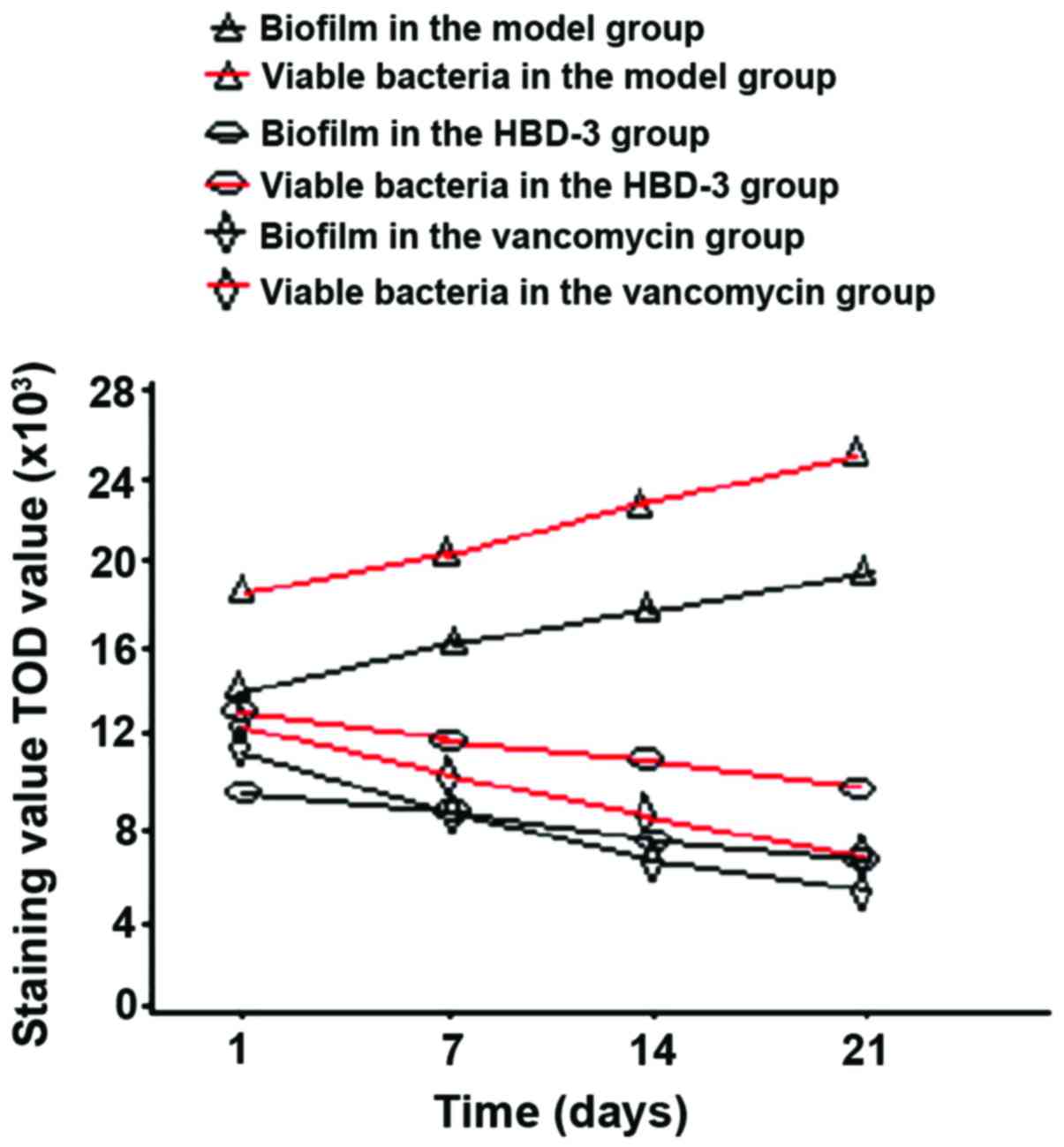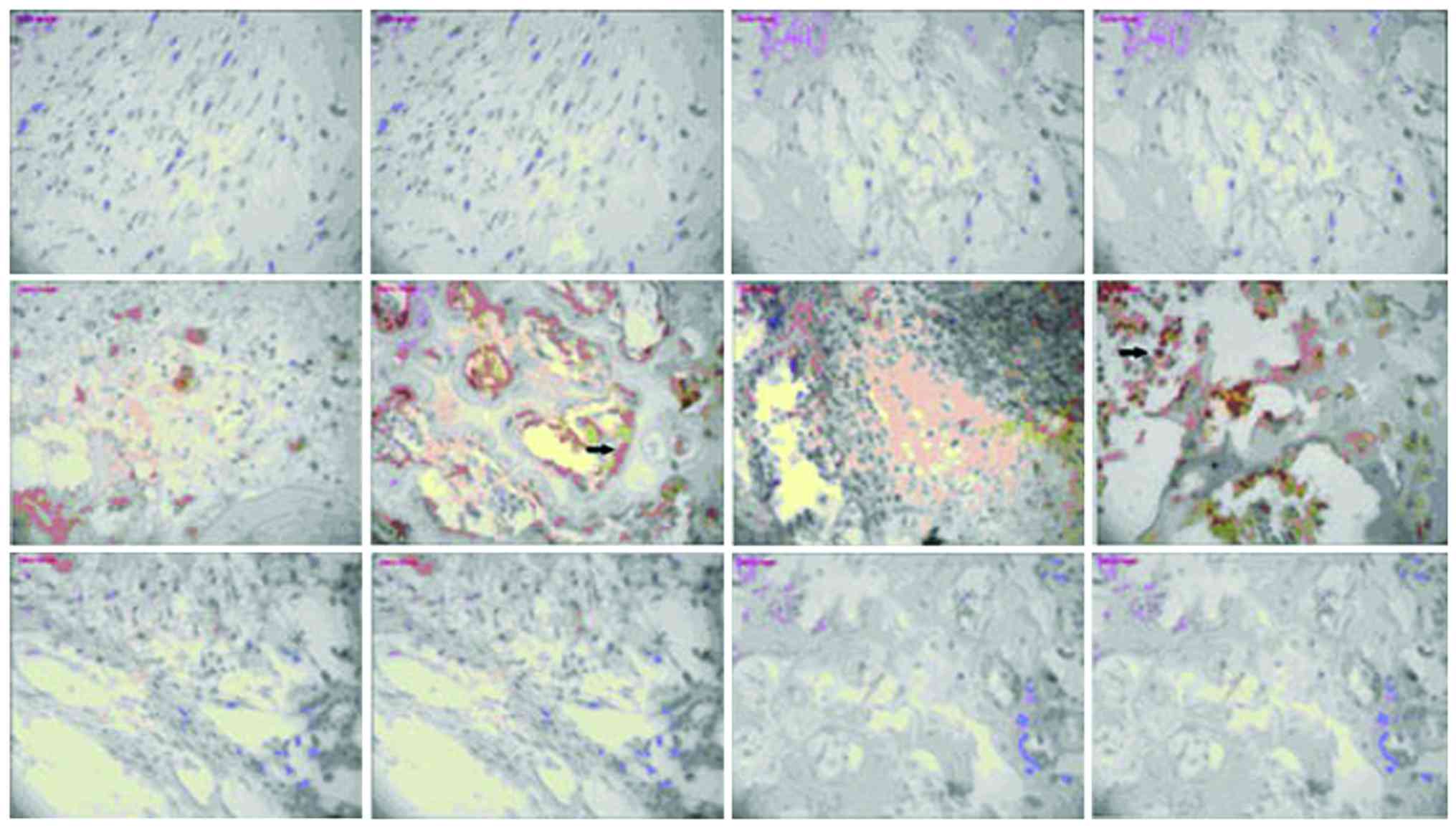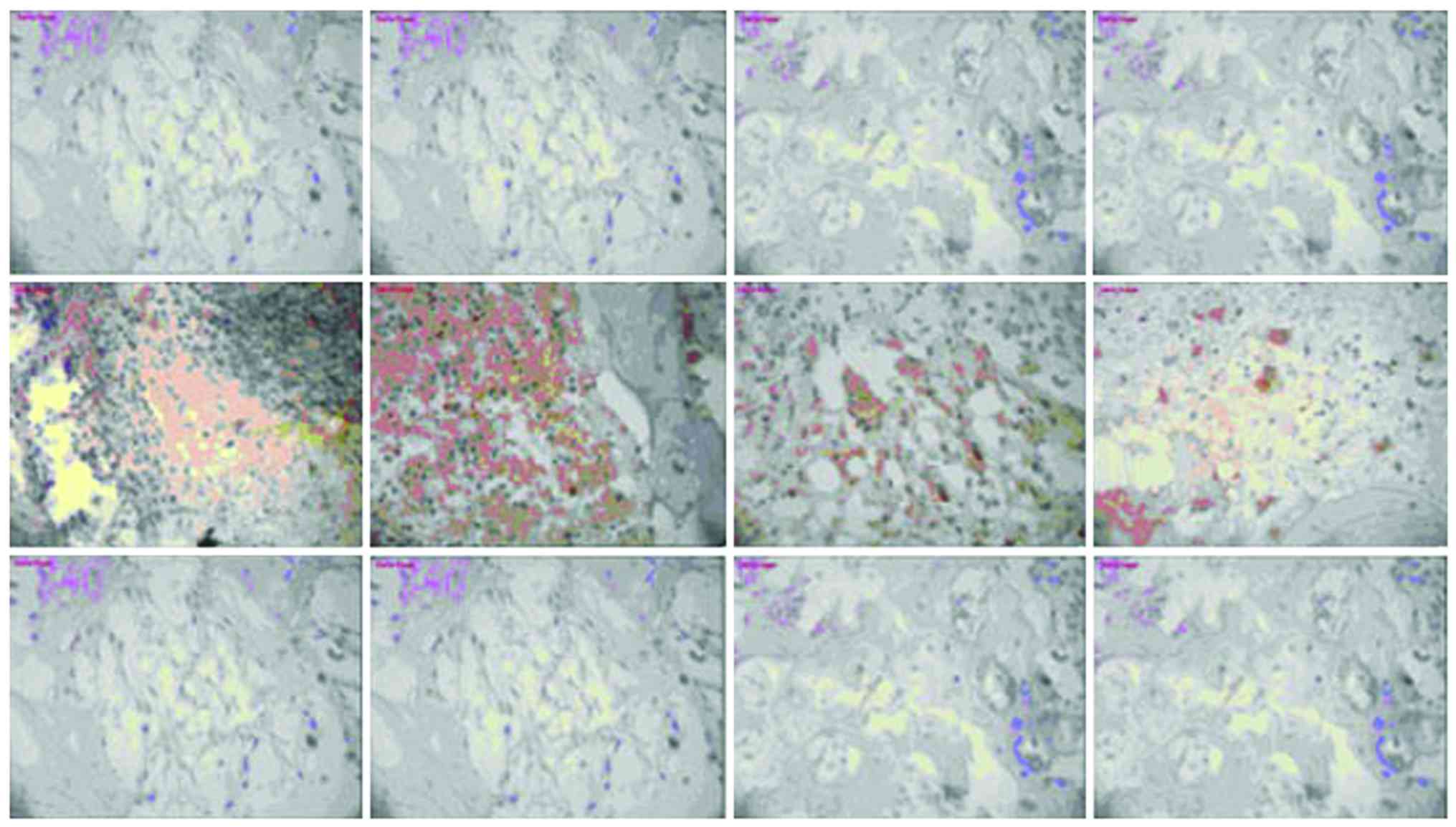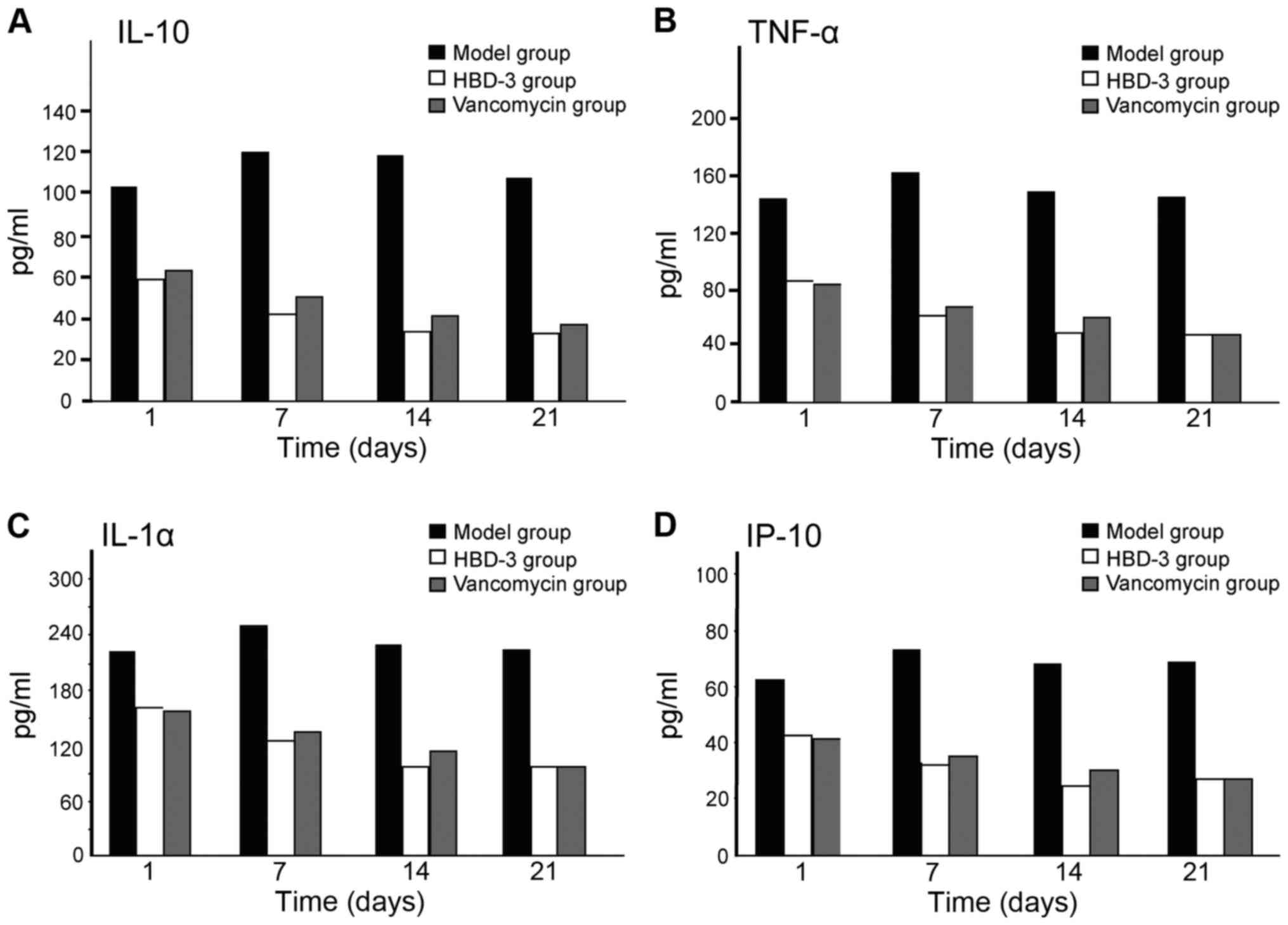The mechanism of human β-defensin 3 in MRSA-induced infection of implant drug-resistant bacteria biofilm in the mouse tibial bone marrow
- Authors:
- Published online on: February 9, 2017 https://doi.org/10.3892/etm.2017.4112
- Pages: 1347-1352
-
Copyright: © Zhu et al. This is an open access article distributed under the terms of Creative Commons Attribution License.
Metrics: Total
Views: 0 (Spandidos Publications: | PMC Statistics: )
Total PDF Downloads: 0 (Spandidos Publications: | PMC Statistics: )
Abstract
The mechanism of human β-defensin 3 (HBD-3) in methicillin-resistant Staphylococcus aureus (MRSA‑induced infection of implant drug-resistant bacteria biofilm in the mouse tibial bone marrow was studied. Healthy adult male Sprague-Dawley rats with average weight of 230 g were selected to construct the infection model of MRSA‑induced implant drug-resistant bacteria biofilm in the mouse left tibial bone marrow.The drugs were intraperitoneally injected after 24 h medullary cavity infection, and the experimental groups included the model group, HBD-3 group, and vancomycin group (20 rats in each group). The model group was injected with 10 ml saline, HBD-3 group was injected with 10 ml of 8 µg/ml (1 MIC) and vancomycin group was injected with 10 ml of 0.5 µg/ml (1 MIC), five animals in each group were sacrificed on the 1, 7, 14 and 21 days, respectively. Observation was carried out on whether there was swelling and purulent secretion on the local wound; 1 ml venous sinus blood of eye socket was collected for blood routine examination and blood culture, and the laser scanning confocal microscopy was used to observe the morphology of the biofilm on the implant surface and the number of viable bacteria. Immunohistochemical staining was adopted to test the expression of nuclear factor-κB (NF-κB) and toll‑like receptor 4 (TLR-4), and ELISA method was used to test interleukin-10 (IL-10), tumor necrosis factor-α (TNF‑α), IL-1α and interferon-γ (INF-γ)-inducible protein-10 (IP-10) expression levels. There was no death due to infection in the HBD-3 group or vancomycin group, 1 case with significant wound swelling was found, respectively, in each group, but there was no purulent secretion. The percentage of the total white blood cells and neutrophil granulocytes as well as the biofilm morphology and the number of viable bacteria in the model group was gradually increased with time, while those in the HBD-3 group and vancomycin group were decreased with time. The comparative difference among groups was statistically significant (P<0.05); those in the HBD-3 group and vancomycin group at each time-point was decreased significantly compared with the model group, and the difference among groups was statistically significant (P<0.05), but in terms of the comparison between the HBD-3 group and vancomycin group, the difference was not significantly different (P>0.05). The NF-κB and TLR-4 expressions in the model group and vancomycin group were not significantly changed at each time-point, those in the HBD-3 group began to increase on the 1st day, and reached the peak on the 7th day and began to decline on the 14th day, and the comparative difference at each time-point was statistically significant (P<0.05); those in the HBD-3 group were significantly higher than the model group and vancomycin group at each time-point and the difference was statistically significant (P<0.05). The IL-10, TNF-α, IL-1α, and IP-10 expressions in the model group at each time were significantly higher than the other two groups and the difference was statistically significant (P<0.05); in terms of the comparison between the HBD-3 group and vancomycin group, the difference was not statistically significant (P>0.05). In conclusion, β-defensin 3 can inhibit the bacterial growth by regulating inflammation and immune responses in the MRSA-induced implant drug-resistant bacteria biofilm infection in the mouse tibial bone marrow.













